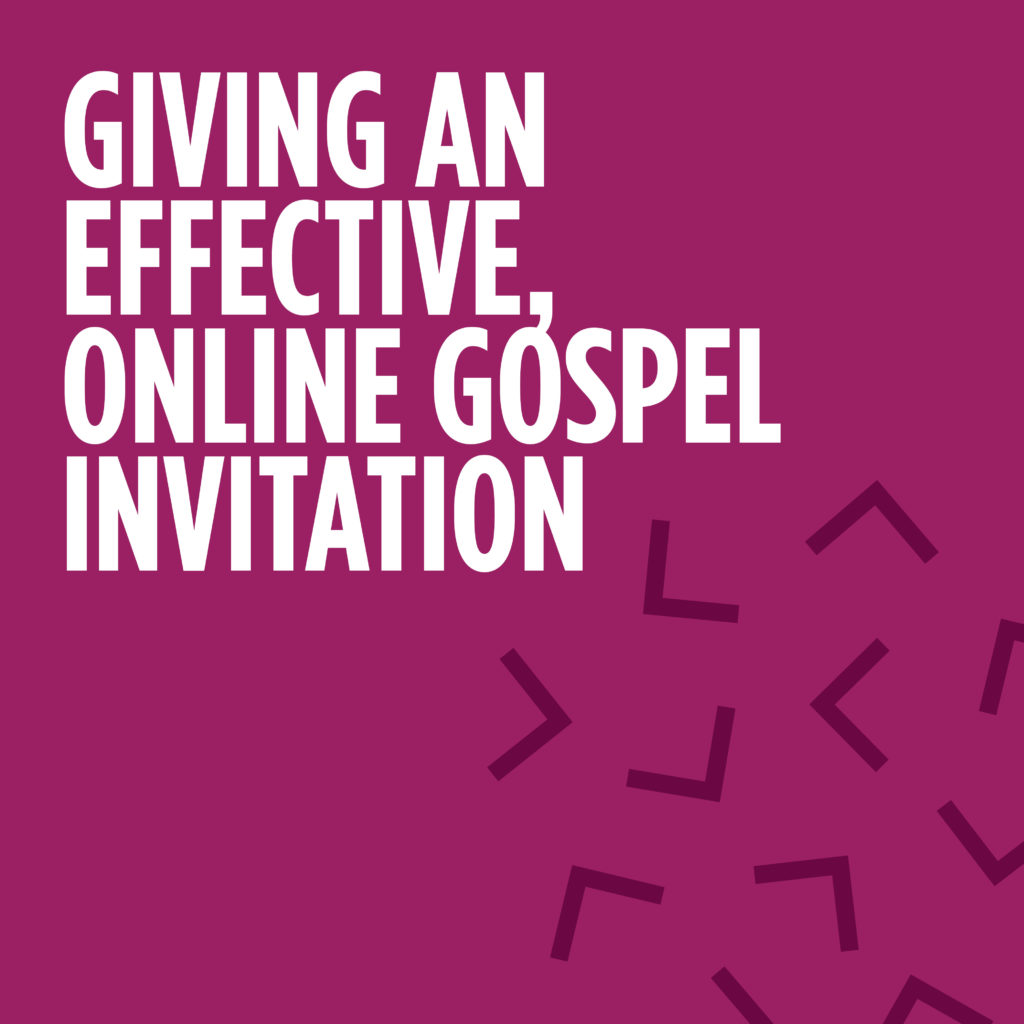ALPHARETTA, Ga. (BP) — The COVID-19 pandemic has created unique circumstances and its share of difficulties. This crisis, however, has also created its fair share of people looking for a solution to their fears, struggles and hopelessness, and that brings the obligation on our part to clearly share the hope of the Gospel.
In a time when the church is gathering digitally, there are many guests and online visitors joining us who are hoping to find hope. Over the last four weekends, the church has moved completely online. Many pastors, next-gen leaders and evangelists have reported they’re preaching the Gospel to a greater number of souls than normal.
One of the key aspects of serving this new audience well is giving an effective Gospel invitation online. Here are several applicable practices to keep in mind:
Keep it fueled with prayer
Pray, pray and pray some more. You are desperately in need of the Lord to speak through you in a way that transcends video screens. In many homes, there are hard hearts sitting and waiting to be broken by the Spirit. Prayer is the fuel for every aspect of the preaching ministry. Only He can touch those hardened hearts.
Keep it biblical
Every Scripture expects to be preached in light of the Gospel. Every Bible communicator should have expectations to deliver the Gospel every week to those who are logging on to watch their messages. Most likely, every time you preach online, you will have people watching who are spiritually lost. Be sure to tell them how they can be found.
Especially in these times of hopelessness, people are looking for hope. And we know hope has a name — Jesus. Your church members are sharing your feed on social media. They’re inviting their friends and family to church. If we take sharing the Gospel online seriously, then people will take seriously the task of inviting the lost to tune in. In fact, your whole sermon should be a Gospel invitation.
Keep it short
Most communicators are preaching online messages in the 25- to 30-minute range. Your invitation to respond to the Gospel should be short and concise. Get to the point of what you’re asking them to do, and get there quickly. Something about preaching to a camera in an empty or near-empty room can cause us to lose confidence. Often, our default as communicators is to ramble when we’re short on confidence. The longer we talk about responding, the more confusing we become.
So, spend as much time preparing for the invitation as you do the sermon. Just like you already know where you’re going in your sermon, you need to know where you’re going in your invitation. Then, get there quickly. There are too many potential distractions on the other side of that video screen — kids, a neighbor starting their lawnmower or even an oven timer. Every second is valuable. Use each one wisely.
Keep it understandable
Be clear in what you’re asking them to do. If you’re confusing in what you’re saying, then you will cause confusion in what they’re responding to. Can the 8-year-old in the living room watching with mom and dad understand? Can the sixth-grader watching with her older brother understand? Nothing stops people from action faster than confusion. Not too long ago, I saw a sign at an airport that read, “Moving Propellers Rip Off Heads.” That message was clear. It definitely caused me to respond and take caution.
Keep it moving to a next step
Every Gospel proclamation has three responses: surrender, a request to hear more or rejection. You see those at the end of Acts 17. For the first two responses, there should be a biblical, short and understandable way to move to a next step of surrendering to Jesus by hearing more of what that looks like.
Here are a few common ones being used right now:
— Create a virtual decision or connection card anchored to your website
— Use a texting app. For example, text SURRENDER to 333777
— On Facebook Live or Instagram Live, encourage people to Direct Message (DM) the church’s or ministry’s social media page
— Have a dedicated phone number they can immediately call
Whatever your preference, do something, and be clear in what you’re asking them to do. The method doesn’t matter nearly as much as asking people to respond with faith in the Gospel message they’ve just heard. It is imperative, however, that there is a plan for immediate follow-up. There are only a few things worse than someone surrendering to Jesus and no one following up with them. Most people are home and on their digital devices, so be sure that someone connects with them for follow-up while the Spirit is moving.
George Whitefield famously said, “Others may preach the Gospel better than I, but no one can preach a better Gospel.” It is still true today. Others may be better at presenting the Gospel online, but no one can present a better Gospel.
Published May 16, 2022



